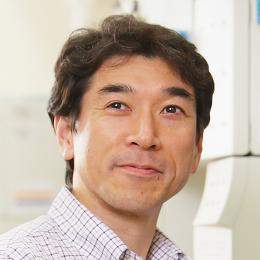Professor Toru Kondo
Dr. Toru Kondo is currently working as Professor at the Institute for Genetic Medicine, Hokkaido University. He has received his PhD on the development of the Sendai virus vector from Osaka University.
He worked at the Osaka Bioscience Institute and University College London MRC Laboratory for Molecular Cell Biology, supervised by Prof. Shigekazu Nagata and Prof. Martin Raff respectively. He then worked as a principal investigator at the Cambridge University Centre for Brain Repair (Group Leader), RIKEN Center for Developmental Biology (CDB) (Team Leader), and Ehime University Proteo-Medicine research center (Professor).
He has been serving as an Associate Editor of “Stem Cells”, an editorial board member of six international journals and a council member of the Japanese Association for Molecular Target Therapy of Cancer. Dr. Kondo is interesting in the molecular mechanism of cell fate decision of neural stem/precursor cells, including oligodendrocyte differentiation, gliomagenesis and CNS aging.
Selected publications
- Kondo T, et al. Essential roles of the Fas ligand in the development of hepatitis. Nat. Med. 3, 409-413, (1997).
- Kondo T, et al. Activation of distinct caspase-like proteases by Fas and reaper in Drosophila cells. Proc. Natl. Acad. Sci. USA 94, 11951-11956, (1997).
- Kondo T and Raff M. Oligodendrocyte precursor cells reprogrammed to become multipotential CNS stem cells. Science 289, 1754-1757, (2000).
- Kondo T and Raff M. The Id4 HLH protein and the timing of oligodendrocyte differentiation. EMBO J. 19, 1998-2007, (2000).
- Kondo T, et al. Persistence of a small subpopulation of cancer stem-like cells in the C6 glioma cell line. Proc. Natl. Acad. Sci. USA 101, 781-786, (2004).
- Kondo T and Raff M. Chromatin remodeling and histone modification in the conversion of oligodendrocyte precursors to neural stem cells. Genes Dev. 18, 2963-2972, (2004).
- Setoguchi T and Kondo T. Nuclear export of OLIG2 in neural stem cells is essential for CNTF-induced astrocyte differentiation. J. Cell Biol. 166, 963-968, (2004).
- Hide et al. Sox11 prevents tumorigenesis of glioma-initiating cells by inducing neuronal differentiation. Cancer Res.69, 7953-7959, (2009).
- Kujuro Y, Suzuki N, Kondo T. Esophageal cancer-related gene 4 is a secreted inducer of cell senescence expressed in aged CNS precursor cells. Proc. Natl. Acad. Sci. USA 107, 8259-8264, (2010).
- Yamashita et al. miR-340 acts as a tumor suppressor in tumorigenesis of human glioblastoma-initiating cells by targeting plasminogen activator, tissue. Cancer Res. 75, 1123-1133, (2015).
- Kaneko et al. Ceacam1L modulates STAT3 signaling to control the proliferation of glioblastoma-initiating cells. Cancer Res. 75, 4224-4234, (2015).
- Ohtsu N, et al. Eva1 maintains the stem-like character of glioblastoma-initiating cells by activating the non-canonical NF-κB signaling pathway. Cancer Res. 76, 171-181, (2016).
- Katayama et al. A powerful CRISPER/Cas9-based method for targeted transcriptional activation. Angew. Chem. Int. Ed. Engl. 55, 6452-6456, (2016).
- Echizenya et al. Discovery of a new pyrimidine synthesis inhibitor eradicating glioblastoma-initiating cells. Neuro Oncol. In press.



